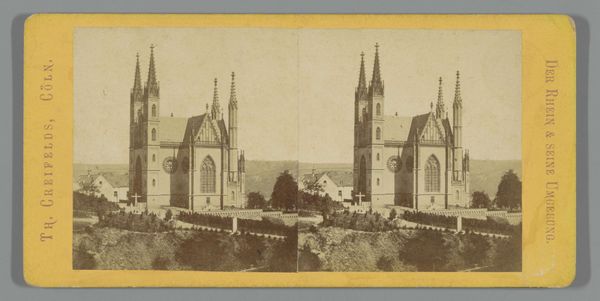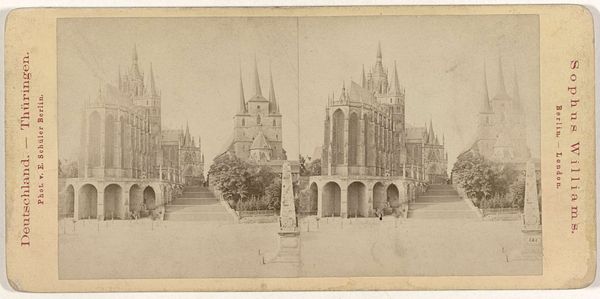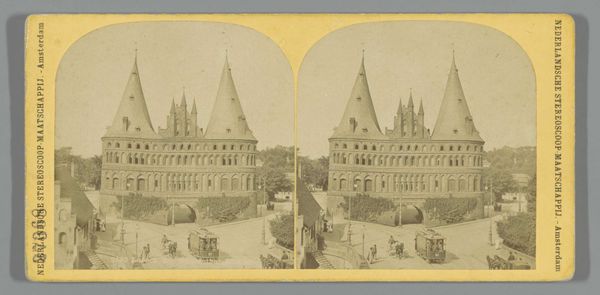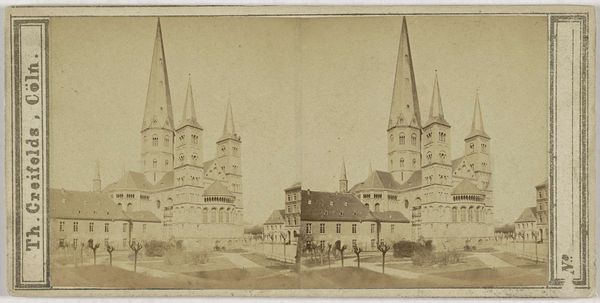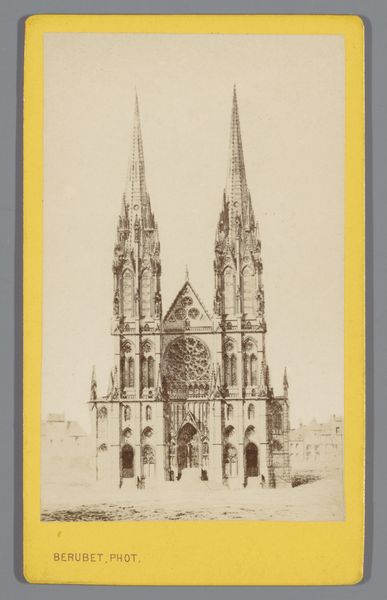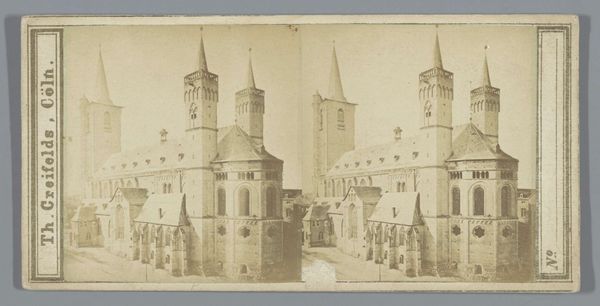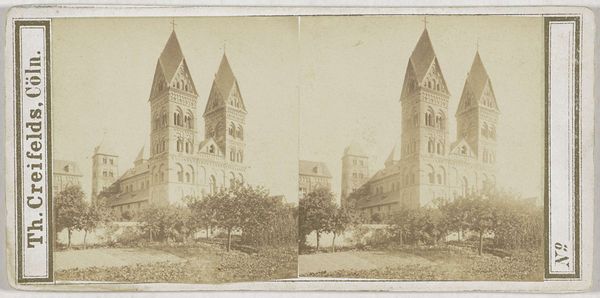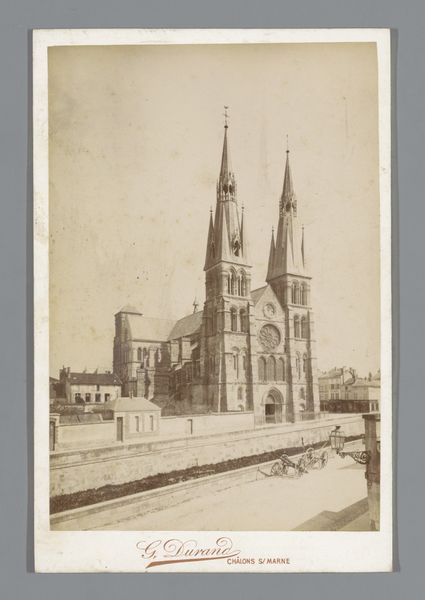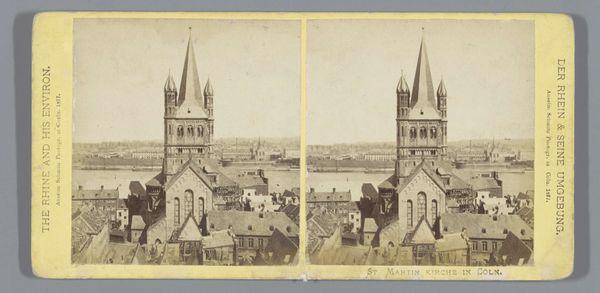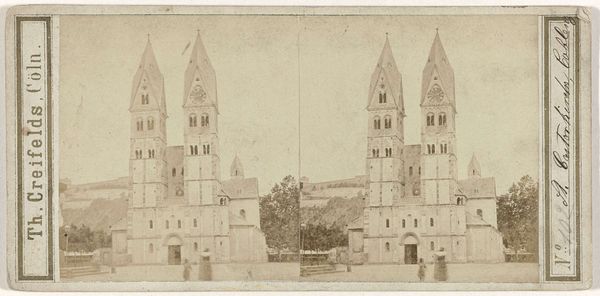
Dimensions: height 85 mm, width 170 mm
Copyright: Rijks Museum: Open Domain
Editor: Here we have Theodor Creifelds's photograph, "Exterieur van de Apollinariskerk te Remagen," taken sometime between 1860 and 1880. It's quite striking. I'm immediately drawn to the architecture—it looks so imposing yet delicate, almost ethereal, set against that slightly blurry backdrop. What do you see in this piece? Curator: It whispers to me of Romanticism, a yearning for the sublime, seen in its almost idealized depiction. The very act of photographing such a structure wasn't just documentation; it was capturing the spirit of an age, the perceived grandeur of the church mirrored against the newness of photography itself. Doesn't it make you wonder what the photographer was hoping to convey with this particular framing, this angle? Editor: Absolutely! It almost feels staged, or idealized. But it’s just a photo of a church, right? Why give it this much...weight? Curator: The weight isn’t just *there*, it’s also *added*. Photography, back then, wasn't the point-and-shoot ease we know now. It was a deliberate, laborious process. Every choice – from composition to lighting to printing – became laden with intent. This Romantic lens transformed stone and mortar into an emotional landscape. What do you make of its rigid, structured composition? Editor: Hmm. Now that you mention it, the symmetry does add to that sense of grandness, almost…divine order? But I hadn’t considered how deliberate even just *taking* the photo would be. It shifts my understanding completely. Curator: Exactly! It's not just seeing; it’s seeing *through*. Creifelds wasn’t merely recording a building; he was inviting us to feel it. Editor: I'll never look at old photographs the same way again. Thank you!
Comments
No comments
Be the first to comment and join the conversation on the ultimate creative platform.

